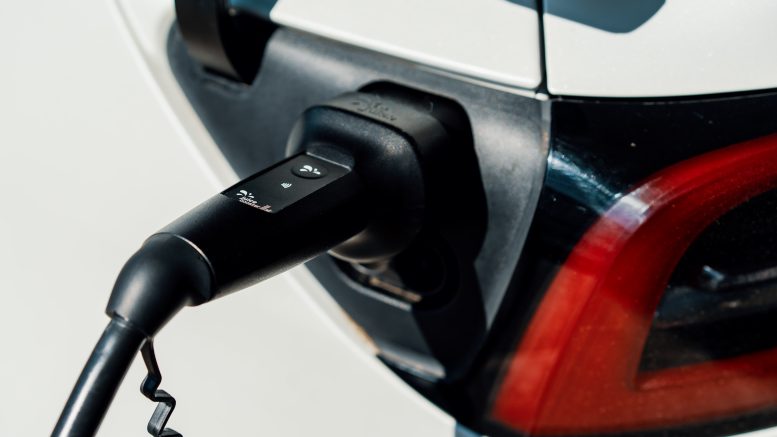By Lawrence Lomeli

The thought of “going green” on the road while keeping some green in our pockets can turn even the biggest spender a queasy shade of green, especially when considering high sticker prices for electric vehicles and the money needed to set up equipment to power them at home.
The good news is California’s Air Resources Board recently announced new incentives to supplement the cost of purchasing electric vehicles. Californians with low to moderate incomes can expect to receive between $1,000 and $7,500 as part of the Clean Vehicle Rebate Project.
While these subsidies lessen the burden for many, becoming more environmentally friendly while driving our cars is still an ever-increasing financial worry for many Californians. By 2035, regulations require that all new cars sold in the state of California be zero emission vehicles.
With inflation, new electric car prices had been trending higher, resulting in more demand for state energy-savings programs. And while some experts predict electric vehicle costs are starting to fall, the average cost of purchasing a new electric vehicle last reported by Kelley Blue Book in 2022, was $66,000.
In addition, as more of us realize buying that first EV can cost more than just the initial purchase due to investing in home-powering equipment, it is even more important to understand our purchasing power and the many incentives and programs available to supplement costs.
At the very least you will need to install a higher wattage outlet or Level 1 charging station to power your EV costing between $300 to $600, according to Carvana. The price goes up from there – a Level 2 charger costs up to $2,700 with labor. Level 3 chargers cost as much as $20,000. The higher the station level, the more fully and quickly you can charge your EV. In addition, paying an electrician can range between $1,200 and $2,000. Consumers may also have to pay for local permits and garage modifications.
Government subsidies, (like California’s Clean Vehicle Rebate Project), green energy loans and tax incentives are available to consumers to mitigate these costs. Here are my rules of the road to follow when purchasing your first clean energy vehicle:
California’s EV Incentives and Programs:
• As mentioned, the California Air Resources Board recently announced a boost in their Clean Vehicle Rebate Project offering rebates for the purchase or lease of a new and eligible zero-emission vehicles. These rebates, that need to be submitted within 90 days of purchase, will apply as long as the funds are available. The state also provides a list of eligible vehicles here and lists other eligibility requirements here.
• California’s Clean Cars 4 All program encourages drivers of higher polluting cars to trade them in for cleaner emitting vehicles. These incentives can amount to up to $9,500 toward the purchase of a new or used plug-in electric (PHEV), battery electric (BEV), or fuel cell electric vehicle (FCEV) – with those with the lowest incomes receiving the larger amounts toward buying a new car. In addition, a new car’s clean efficiency is weighed to determine incentive amounts. For example, someone buying a fuel cell vehicle may receive more from the program than someone purchasing a standard EV or hybrid.
• Another upgrade incentive is the state’s Clean Vehicle Assistance Program. The program provides grants and affordable financing to qualifying drivers purchasing a new or used EV or hybrid. You can read about the program’s requirements here.
Green Energy Loans
• Green energy loans can increase your purchasing power and help you maintain your monthly budget. There may be additional loans available, however, at SAFE Credit Union where I oversee auto loans, we are driving this forward in many ways. SAFE offers a green energy “down payment” loan for EV buyers, and a green energy loan for homeowners looking to outfit their homes with solar power. The “down payment” loan provides of up to $10,000 for borrowers purchasing plug-in electric passenger cars, pickup trucks, or SUVs. The loan can help buyers fully finance a new electric car loan by financing 100 percent of the vehicle using a traditional auto loan, plus using the EV loan as a down payment option.
Tax Incentives
• Many buyers already qualify for federal tax incentives when they buy new clean vehicles. The Inflation Reduction Act made it possible for many who buy cleaner cars between 2023 and 2032 to get up to $7,500 in tax credits.
• Another great resource is the NC Clean Energy Technology Center’s Database of State Incentives for Renewables & Efficiency. It provides a complete list of business and personal tax incentives, programs and rebates including hundreds of local, state and federal programs.
Whether borrowing or taking advantage of government assistance, there are lot of factors to keep in mind when going green. You need to know what you need to buy and where to look, and then move forward quickly on the opportunities to save or invest in green energy while they last.
SAFE Credit Union Assistant Vice President for Consumer Lending, Lawrence Lomeli is an expert in vehicle lending. He can be reached at mediainquiry@safecu.org


Lately, I’ve seen lots of articles critical of EVs. One even said they cost $130,000+ to maintain…annually!
My experience is a little different. Using a plug-in hybrid, we replaced a Honda Civic for a 50-mile-round-trip commute–all done on battery for the plug-in hybrid. The gas bill for the Civic (a nice car) was $70/month. The change in our electricity bill: $4.
Granted this isn’t a comprehensive survey, but it’s pretty unconvincing that EVs are more expensive. As for maintenance, internal combustion engines have ~2,000 parts. Electric motors have 7 – 17 parts. Guess which makes more maintenance demands.
Oh yes, and what about building our civilization so cars aren’t necessary and transit is possible. Mixed-use (homes, stores, offices, etc.) pedestrian-friendly neighborhoods actually are the most valuable real estate in the region (Mckinley park!).